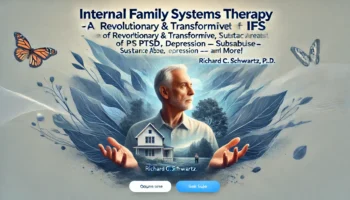ACT for Children and Adolescents-Acceptance and Commitment Therapy for Trauma, Anxiety, Attachment Issues and More! – Timothy Gordon
ACT for Children and Adolescents-Acceptance and Commitment Therapy for Trauma, Anxiety, Attachment Issues and More! – Timothy Gordon Download. Integrating …
Overview
Discover the Best Learning with ACT for Children and Adolescents-Acceptance and Commitment Therapy for Trauma, Anxiety, Attachment Issues and More! – Timothy Gordon
WisMentor is your ultimate destination for online learning. Explore "ACT for Children and Adolescents-Acceptance and Commitment Therapy for Trauma, Anxiety, Attachment Issues and More! – Timothy Gordon" by top authors and instructors, designed to transform your skills and career. Start now and unlock your potential!
Salepage check: ACT for Children and Adolescents-Acceptance and Commitment Therapy for Trauma, Anxiety, Attachment Issues and More!
Author: Timothy Gordon

- Strategies to manage emotions, achieve goals and build connections
- New techniques to reduce stress and suffering in younger populations
- Experiential exercises, case studies and video examples
You’ve heard that desperate cry for help from a parent or caregiver to – “fix my kid”.
Integrating Acceptance and Commitment Therapy (ACT) into your practice offers a new way for you to achieve positive therapeutic outcomes with difficult-to-treat younger clients. Get ready to use new tools that will change the “fix” agenda and embrace an approach of acceptance and build on children’s strengths.
Join experienced ACT trainer Tim Gordon, MSW, RSW, as he delivers an exercise and technique-heavy workshop that will give you the tools needed to more effectively treat kids with anger, anxiety, depression, eating disorders, trauma and family conflict.
Tim will teach you the main concepts of ACT and how to empower kids how to live a more engaged life by navigating with acceptance, self-compassion and present moment skills including mindfulness.
ACT for children and adolescents is not merely a new technique or set of methods, it’s a scientific approach enhancing practices that already work for many clinicians, breathing new life into case conceptualization and looking at our most stuck cases. Through case examples, video clips, and role-play you will be able to integrate ACT skills in your practice tomorrow!
- Describe the six processes that underlie psychological flexibility.
- Formulate common clinical problems in the treatment of children using a psychological flexibility model.
- Explain how the model of psychological flexibility can be organized in three major interventions that underlie most 3rd wave of cognitive behavioral therapies.
- Demonstrate the ability to formulate an ACT consistent therapeutic agreement and gain sufficient buy in from primary caregivers and other systems.
- Show how to use “creative hopelessness” to motivate a change in the control agenda including experiential activities aimed at bringing children into direct contact with letting go of their attempts to escape unwanted thoughts and feelings.
- Demonstrate at least three skills or methods to increase ‘awareness’ in child client populations and related buy-in from primary caregivers.
- Demonstrate at least three skills or methods to increase ‘engagement’ in child client populations and related buy-in from primary caregivers.
- Distinguish between goals and values as specified in ACT and how to use primary caregivers values for buy-in.
ACT in a Nutshell
- The role of values: mindfulness, acceptance, commitment, behavior
- Experiential avoidance
- Psychological flexibility
- ACT for children & adolescents
- The hexagon model
Role of Exposure in ACT
- Translate client values into behavioral goals
- Barriers to behavioral goals: external and internal avoidance
- External exposure
- Situations
- People
- Internal exposure
- Thoughts
- Emotions
- Memories
- Bodily sensations
- Psychological flexibility in young people
- Games and activities
Assess and Track
- Assess the function of behavior in young people
- Three categories of behavior: open-aware-engaged
- Create a therapeutic contract, agenda and agreement
ACT in Action – Strategies, Games, Activities and Experiential Exercises for Children & Adolescents:
- Anxiety
- Trauma
- Attachment issues
- Body dysmorphic disorder
- Bullying
- Family conflict
Group Settings & Schools
- Use ACT in groups with children and adolescents
- ACT in schools and non-clinical settings
About ACT for Children and Adolescents-Acceptance and Commitment Therapy for Trauma, Anxiety, Attachment Issues and More! – Timothy Gordon and Our Expert Authors
ACT for Children and Adolescents-Acceptance and Commitment Therapy for Trauma, Anxiety, Attachment Issues and More! – Timothy Gordon is part of our extensive collection of over 70,000 premium courses at WisMentor. Created by renowned authors and industry leaders, this course is tailored to provide cutting-edge knowledge and actionable insights.
Why Choose WisMentor?
- 🌟 Access courses from world-renowned authors.
- 📚 Wide range of topics to suit your professional and personal growth needs.
- 💼 Lifetime access and flexible learning options.
Key Features of ACT for Children and Adolescents-Acceptance and Commitment Therapy for Trauma, Anxiety, Attachment Issues and More! – Timothy Gordon:
- ✅ Comprehensive content covering essential topics.
- ✅ Evidence-based methodologies and practical examples.
- ✅ Learn at your own pace with expert guidance.
How to Access Your Course?
Getting started is easy:
- 📩 Receive an instant download link via email.
- 🌐 Access your course anytime through your account dashboard.
- 📱 Compatible with all devices for a seamless experience.
Need Help?
Our dedicated support team is here to assist you. Visit our Contact Us page or reach out via email for any queries or assistance.
More from Our Collection:
Don’t miss the opportunity to explore more courses from top authors and enrich your learning journey at WisMentor. Find your next course now and take your skills to the next level.


